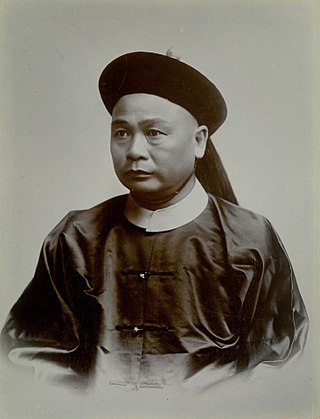
Zhan Tianyou, or Tien-Yow Jeme, was a pioneering Chinese railroad engineer. Educated in the United States, he was the chief engineer responsible for construction of the Peking-Kalgan Railway, the first railway constructed in China without foreign assistance. For his contributions to railroad engineering in China, Jeme is known as the "Father of China's Railroad".

Kuang is a Chinese surname originated from central China. Although Kuang is not amongst the 100 most common Chinese surnames, it is common amongst the Chinese diaspora in Hong Kong, Macau, Malaysia, Singapore, Vietnam, Philippines, United States, United Kingdom, Canada, Australia, Fiji, Thailand, Peru, Cuba, Burma, Indonesia and Reunion Island.

Sir Shouson Chow, KBE, LLD, JP, also known as Chow Cheong-Ling, was a Hong Kong businessman. He had been a Qing dynasty official and prominent in the Government of Hong Kong.

Daniel Willard was an American railroad executive best known as the president of the Baltimore and Ohio Railroad (B&O) from 1910 to 1941. He served on or headed several government railroad commissions in World War I and appeared on the cover of Time magazine in 1932 due to his part in negotiating wage cuts in the Great Depression.

The Peking Legation Quarter was the area in Beijing (Peking), China where a number of foreign legations were located between 1861 and 1959. In the Chinese language, the area is known as Dong Jiaomin Xiang, which is the name of the hutong through the area. It is located in the Dongcheng District, immediately to the east of Tiananmen Square.

William Croad Lovering was a U.S. Representative from Massachusetts.

William Lafayette Darling (1856-1938), was a consulting engineer in St. Paul, Minnesota.
The first 1,435 mmstandard gauge railway to be built and survive in China was the Kaiping (開平) colliery tramway located at Tangshan in Hebei province. However, this was not the very first railway in China. An earlier attempt to introduce railways had been made in 1876 when the short Shanghai to Wusong narrow gauge line known as the "Woosung Road Company" was built but then pulled up within less than two years because of Chinese government opposition.

Claude William Kinder, was an English engineer. For over thirty years he was engineer-in-chief of the Kaiping Tramway and Imperial Railways of North China.

Russian Dalian, also known as Kvantunskaya Oblast, was a leased territory ruled by the Russian Empire that existed between its establishment after the Pavlov Agreement in 1898 and its annexation by the Empire of Japan after the Russo-Japanese War in 1905.
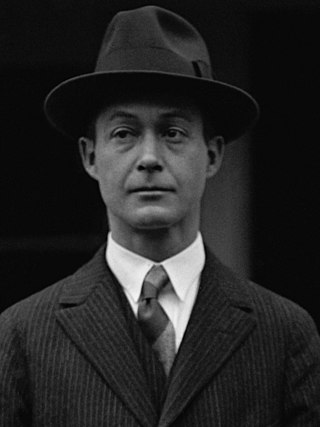
John Van Antwerp MacMurray was an American attorney, author and diplomat best known as one of the leading China experts in the U.S. government. He served as Assistant Secretary of State from November 1924 to May 1925, and was subsequently appointed Minister to China in 1925. Although MacMurray had coveted the China post, he soon fell into disagreement with the State Department over U.S. policy towards the ruling Kuomintang government. He resigned the position in 1929 and briefly left the foreign service. Following several years in academia, MacMurray returned to the State Department to become Minister to Estonia, Latvia and Lithuania from 1933 to 1936. He later served as ambassador to Turkey from 1936 to 1941, and then was made a special assistant to the Secretary of State until his retirement in 1944.
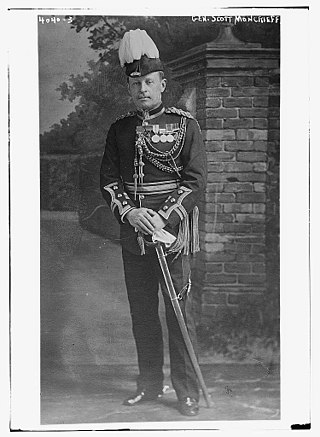
Major General Sir George Kenneth Scott-Moncrieff was a Scottish soldier and engineer.

Sir Anthony Hastings George KCMG was a British diplomat, who served as British Consul-General in Shanghai and Boston during the Second World War.

Kang-i Sun Chang, is a Chinese-born American sinologist. She is a scholar of classical Chinese literature. She is the inaugural Malcolm G. Chace Professor, and former chair of the Department of East Asian Languages and Literatures at Yale University.
William Orr Leitch FRSE FRSGS MICE (d.1948) was a Scottish civil engineer responsible for building sections of the Peking-Mukden railway and consequently serving as both its Chief Engineer and Manager. He was involved in the Mukden Incident of 1931.

Jonas Waldo Smith was an American civil engineer and chief engineer on the Board of Water Supply of New York from 1905 to 1922. He was awarded the 1918 John Fritz Medal.
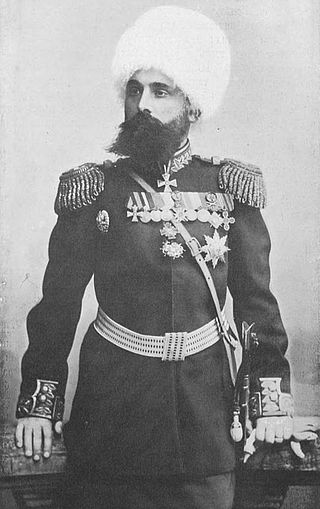
Dejan Ivanovich Subotich was a Russo-Serbian military and state leader, military governor of Russian Dalian ;Transcaspian Oblast, general governor of Primorsky Krai (1902-1903), Military ataman of the Ussuri Cossack Host, Governor General of Amur Oblast (1903-1905) and Turkestan (1905-1906).
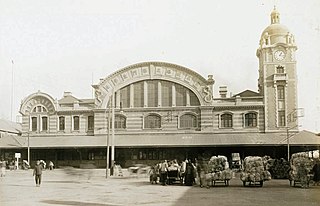
Peking–Mukden Railway was a 19th-century steam powered trunkline connecting Peking (Beijing) and Mukden through Tianjin, northeastern Hebei, and southwestern Liaoning; it was a crucial railway in North China and Northeast China.

Konstantin Vikentyevich Tserpitsky was a Russian commander, lieutenant general, participant in the campaigns of 1873, 1875–1876, 1878 and 1880 in Turkestan, the Chinese campaign of 1900–1901 and the Russo-Japanese War of 1904–1905. He distinguished himself during the suppression of the Boxer Uprising (1900–1901). Brother of General Tserpitsky V.V., who died during the defense of Port Arthur.

Lt. Col. George Douglas Gray was a Scottish physician who served in the British Army in what is now Malawi and later in what is now Kenya and then as the medical officer to the British ambassador in Peking, China, where he was also the medical superintendent to the British Charitable Hospital there. He assisted in combatting the plague epidemic of 1910–1911 for which he received the thanks of the Chinese government. He was subsequently the British delegate to the International Plague Conference held in Mukden in 1911.


















